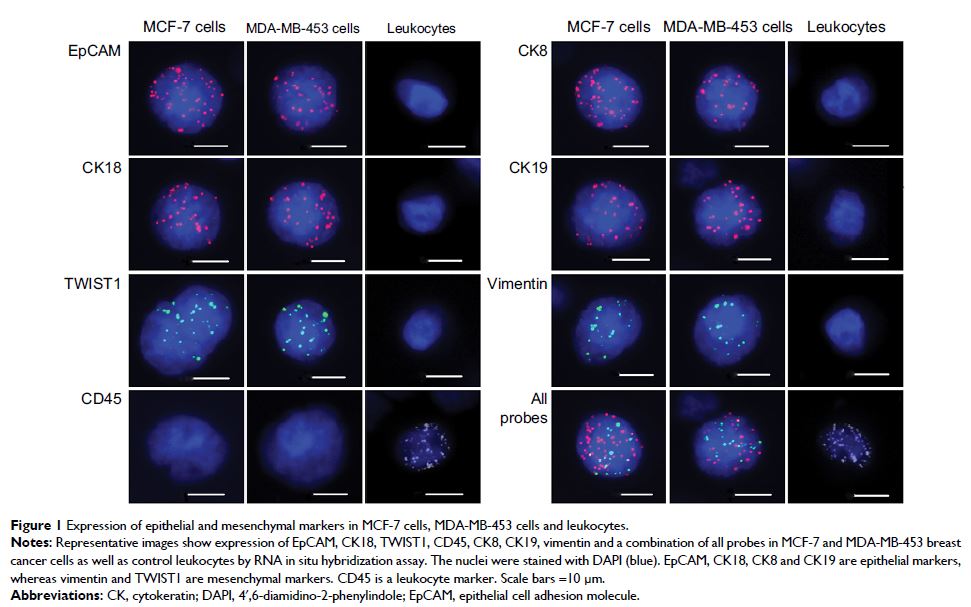108384
论文已发表
注册即可获取德孚的最新动态
IF 收录期刊
- 3.4 Breast Cancer (Dove Med Press)
- 3.2 Clin Epidemiol
- 2.6 Cancer Manag Res
- 2.9 Infect Drug Resist
- 3.7 Clin Interv Aging
- 5.1 Drug Des Dev Ther
- 3.1 Int J Chronic Obstr
- 6.6 Int J Nanomed
- 2.6 Int J Women's Health
- 2.9 Neuropsych Dis Treat
- 2.8 OncoTargets Ther
- 2.0 Patient Prefer Adher
- 2.2 Ther Clin Risk Manag
- 2.5 J Pain Res
- 3.0 Diabet Metab Synd Ob
- 3.2 Psychol Res Behav Ma
- 3.4 Nat Sci Sleep
- 1.8 Pharmgenomics Pers Med
- 2.0 Risk Manag Healthc Policy
- 4.1 J Inflamm Res
- 2.0 Int J Gen Med
- 3.4 J Hepatocell Carcinoma
- 3.0 J Asthma Allergy
- 2.2 Clin Cosmet Investig Dermatol
- 2.4 J Multidiscip Healthc

循环肿瘤细胞的间充质细胞表型与乳腺癌患者的远处转移有关
Authors Zhang SR, Wu TC, Peng XG, Liu J, Liu F, Wu SY, Liu SY, Dong Y, Xie SJ, Ma SL
Received 23 August 2017
Accepted for publication 26 October 2017
Published 23 November 2017 Volume 2017:9 Pages 691—700
DOI https://doi.org/10.2147/CMAR.S149801
Checked for plagiarism Yes
Review by Single-blind
Peer reviewers approved by Dr Giandomenico Roviello
Peer reviewer comments 4
Editor who approved publication: Professor Nakshatri
Abstract: In
this study, we investigated the relationship between the epithelial–mesenchymal
transition phenotype of circulating tumor cells (CTCs) and distant metastasis
in breast cancer patients. We analyzed the expression of epithelial (epithelial
cell adhesion molecule, cytokeratin [CK]8, CK18 and CK19) and mesenchymal
(vimentin and TWIST1) markers in CTCs from a large cohort of Chinese breast
cancer patients (N=1083) using Canpatrol™ CTC assays. We identified CTCs in
84.9% (920/1083) of the breast cancer patients enrolled in this study. Among
these 920 patients, 547 showed epithelial CTCs, 793 showed biphenotypic CTCs
and 516 showed mesenchymal CTCs. Receiver operating characteristic (ROC) curves
demonstrated circulation of both biphenotypic and mesenchymal CTCs (area under
ROC curve value: 0.728; sensitivity: 68.7% and specificity: 71.6%) in patients
was associated with distant metastasis. These findings demonstrate that the
epithelial–mesenchymal transition phenotype of CTCs is a potential biomarker
predictive of distant metastasis in breast cancer.
Keywords: breast cancer, circulating tumor cells, epithelial–mesenchymal
transition, distant metastasis, prediction
